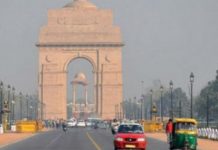 On August 19, 2020, the Union Cabinet chaired by Prime Minister Narendra Modi approved to set up the National Recruitment Agency (NRA), making a paradigm shift in government recruitments. On paper, the proposal seems very lofty and idealist but are there enough jobs in the country.
On August 19, 2020, the Union Cabinet chaired by Prime Minister Narendra Modi approved to set up the National Recruitment Agency (NRA), making a paradigm shift in government recruitments. On paper, the proposal seems very lofty and idealist but are there enough jobs in the country.
Available data indicates that an estimated 2.5 crore to 3 crore aspirants appear for about 1.25 lakh vacancies in the Central government every year. The unemployment rate among youngsters below the age of 25 could touch 32.5 per cent. Creating jobs is a challenge staring the Central and state governments in the face. To add to it announcement by states like Madhya Pradesh that in jobs local youths would be given priority. In a tweet, Madhya Pradesh CM said: “From today, the children of Madhya Pradesh will have the first right over the resources of Madhya Pradesh. All government jobs will be reserved only for the children of Madhya Pradesh. Our aim is to involve the local talents in the upliftment of the state”. In Haryana, the deputy chief minister, Dushyant Chautala has announced that the government would strive to reserve jobs in the private sector for local youths.
Now since the private sector is under pressure due to the recession triggered by the ongoing pandemic, there would be added pressure on the government sector for jobs once we emerge from the medical crisis.
With not commensurate jobs available with the accelerated demand, a piquant situation seems emerging.
The Union Cabinet’s approval to set up the much touted National Recruitment Agency is a most needed timely reform to streamline the hiring process and reduce the multiple examination cycle. We all are aware of lacunas in the system and the multiple tests, multiple job applications wasting time and available resources with the candidates.
The NRA will save on both time and resources of candidates. The NRA would result in reduced test centres in each district thus resultantly reducing the financial burden on the employed youths. An added feature would be common curriculum that will end discrimination between urban and rural youths.
At present, candidates seeking government jobs have to appear for separate examinations conducted by multiple recruiting agencies for various posts. Candidates have to pay fees to multiple recruiting agencies and also have to travel long distances for appearing in various exams. Government admits that approximately 1.25 lakh government jobs are advertised every year for which 2.5 crore aspirants appear in various examinations. A common eligibility Test would enable these candidates to appear once and apply to any or all of these recruitment agencies for the higher level of examination.
The NRA will conduct the Common Eligibility Test (CET) for recruitment to non-gazetted posts in government and public sector banks. This test aims to replace multiple examinations conducted by different recruiting agencies for selection to government jobs advertised each year, with a single online test.
Salient features
* The Common Eligibility Test will be held twice a year.
* There will be different CETs for graduate level, 12th Pass level and 10th pass level to facilitate recruitment to vacancies at various levels.
* The CET will be conducted in 12 major Indian languages. This is a major change, as hitherto examinations for recruitment to Central Government jobs were held only in English and Hindi.
* To begin with CET will cover recruitments made by three agencies: viz. Staff Selection Commission, Railway Recruitment Board and the Institute of Banking Personnel Selection. This will be expanded in a phased manner.
* CET will be held in 1,000 centres across India in a bid to remove the currently prevalent urban bias. There will be an examination centre in every district of the country. There will be a special thrust on creating examination infrastructure in the 117 aspirational districts.
* CET will be a first level test to shortlist candidates and the score will be valid for three years.
* There shall be no restriction on the number of attempts to be taken by a candidate to appear in the CET subject to the upper age limit. Age relaxation for SC/ST and OBC candidates as per existing rules will apply.
Advantages for students
* Removes the hassle of appearing in multiple examinations.
* Single examination fee would reduce the financial burden that multiple exams imposed.
* Since exams will be held in every district, it would substantially save travel and lodging cost for the candidates. Examination in their own district would encourage more and more women candidates also to apply for government jobs.
* Applicants are required to register on a single Registration portal.
* No need to worry about clashing examination dates.
Advantages for Institutions
* Removes the hassle of conducting preliminary / screening test of candidates.
* Drastically reduces the recruitment cycle.
* Brings standardization in examination pattern.
* Reduces costs for different recruiting agencies. 600 crore savings expected.
The Government also plans to provide outreach and awareness facilities to assist candidates in rural and far flung areas to familiarize them with the online examination system. A 24×7 helpline will be set up for answering queries, complaints and queries.
National Recruitment Agency will be a Society registered under the Societies Registration Act. It will be headed by a Chairman of the rank of the Secretary to the Government of India. It will have representatives of the Ministry of Railways, Ministry of Finance/Department of Financial Services, the SSC, RRB & IBPS. The Government has sanctioned a sum of 1517.57 crore for the National Recruitment Agency (NRA). The expenditure will be undertaken over a period of three years. It is envisioned that the NRA would be a specialist body bringing the state-of-the-art technology and best practices to the field of Central Government recruitment.
Why is the NRA needed?
As and when it will be set up, the NRA will conduct a common eligibility test (CET) and based on the CET score a candidate can apply for a vacancy with the respective agency. To begin, it will shortlist candidates for the Group B and C posts, which are now being conducted by the Staff Selection Commission (SSC), Railways Recruitment Board (SSC) and Institute of Banking Personnel Selection (IBPS). The test will be conducted for three levels: graduate, 12th 10th class and 12th class pass candidates.
The curriculum for Common Entrance Test would be common. The CET score of a candidate shall be valid for a period of three years from the date of declaration of the result for all jobs in the government. The common entrance test would be conducted in multiple languages. Sources said that the Union Cabinet has approved 1517.57 crore for the NRA, for a period of 3 years to set up NRA and examination centres in different districts in the country. Information and Broadcasting Minister Prakash Javadekar hoped that “the decision to set up NRA will allow job-seekers take one common test and save costs and time spent on writing multiple exams”.
The proposal seems laudable but what is more curcial is creation of jobs to fulfill aspirations of unemployed but qualified and employable youths.
letters@tehelka.com













